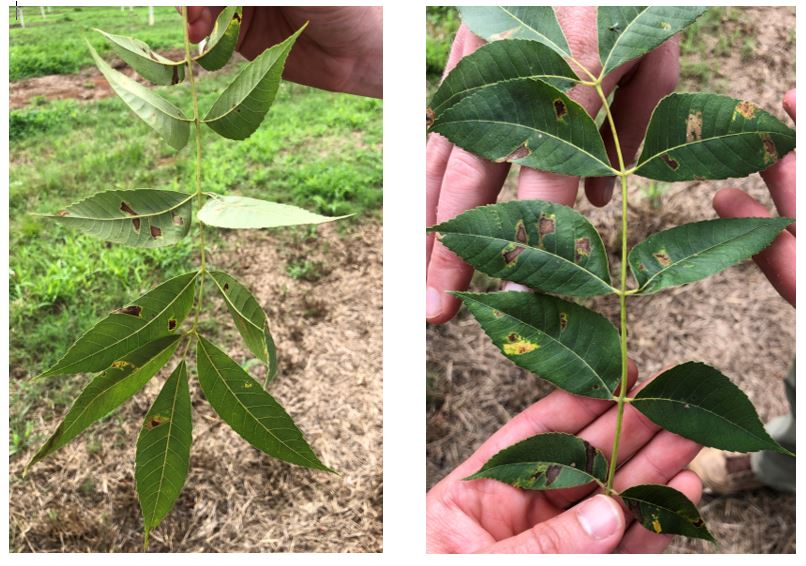
By Clint Thompson
According to UGA Extension, aphids are one of the most important pests pecan growers need to manage during the growing season. And they’re also one of the most difficult to control.
Black-margined aphids and yellow aphids are present all season but it’s not uncommon to see a spike in numbers in mid-to-late June and in August. Andrew Sawyer, University of Georgia Cooperative Extension area pecan agent for Southeast District, said it’s important not to treat black aphids until you start seeing nymph clusters. The threshold is when nymph clusters appear on damaged leaves.
With yellow aphids, a glossy appearance on the leaves called honeydew is commonly seen. Tree leaves can absorb a good bit of honeydew and be fine. The threshold is 50 aphids per compound leaf.
If you’re seeing aphid damage on your pecan trees, Sawyer offers these tips.
- Don’t spray broadspectrum insecticides. These are pyrethroids and chlorpyrifos. These will harm beneficial insects and flare aphids.
- Ignore yellow aphids.
- Ignore black aphids before late July.
- If black aphids flare up within 3 to 4 weeks following application, apply aphid insecticides and rotate.
- Apply gibberellic acid, which is a plant growth regulator. It can prevent black pecan aphid injury and inhibit the establishment of black pecan aphids in the orchard. Gibberellic acid does not affect aphids directly and will not control any other pest, including yellow aphids. Three applications should be made at 2-week intervals, beginning in mid-July, applying 10 oz (or 5 oz of ProGibb LV Plus) each time.
- Try to save Nexter late season if needed for black aphids when mites are a problem.
Sawyer emphasizes the importance of beneficial insects. The two easiest to see in the orchard are lady bug larvae and the eggs of green lace wings. If you flip over a compound leaf and see either of these, your beneficial population is good.









